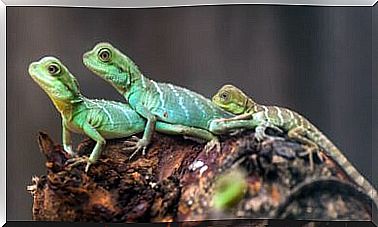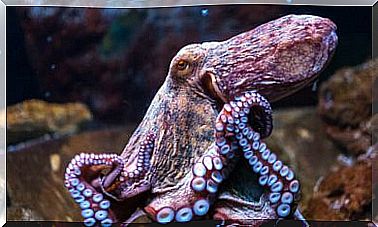Meet The Cetaceans Of The Mediterranean
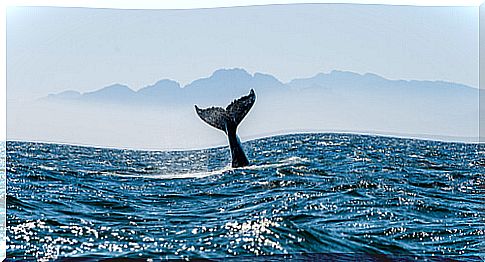
Cetaceans are one of the most fascinating groups of animals that exist. These marine mammals populate the seas around the world, although this time we inform you about the cetaceans of the Mediterranean.
Large and smaller cetaceans live in these waters: from dolphins to large whales and other cetaceans, they are all part of the different species of cetaceans in the Mediterranean. There are approximately 80 species of cetaceans in the world, and in the Mediterranean Sea we find eight of these species:
Common dolphin
The common dolphin ( Delphinus delphis ) is very easy to distinguish: it has a dark region on the back and a lighter region that can have cream colors. It is not as big as the bottlenose dolphin; it is usually about two meters long.
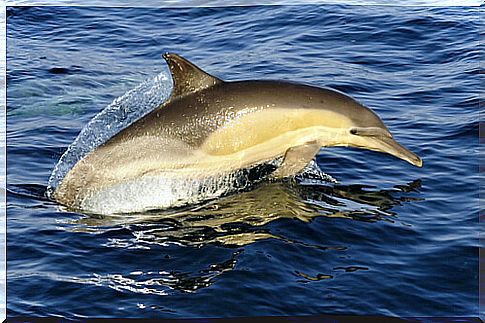
Striped dolphin
One of the best known cetaceans in the Mediterranean is the striped dolphin ( Stenella coeruleoalba ). This animal is characterized by a series of bands that combine dark blue tones with gray and white , and a line that crosses from the nose to the tail passing through the eye.
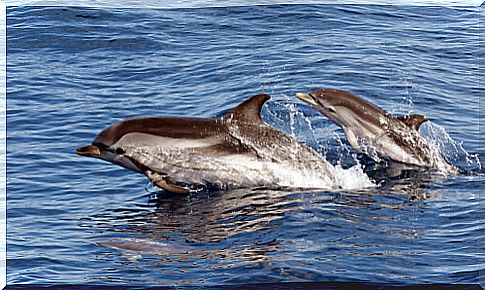
Bottlenose dolphin
Perhaps best known, the bottlenose or bottlenose dolphin ( Tursiops truncatus ) is the animal that comes to mind when we talk about dolphins.
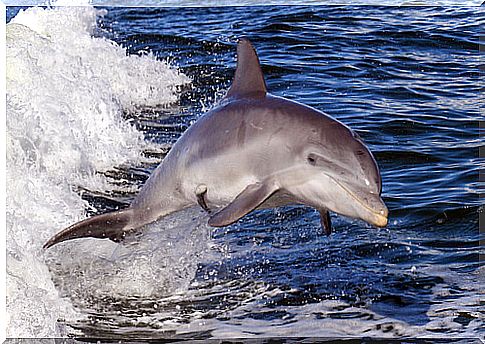
More robust than the striped dolphin and larger, it has a gray coloration throughout its body. It lives in much smaller groups than bottlenose dolphins, so there are usually no more than 10 specimens, although large congregations can be formed.
They are very coastal animals, which tend to approach the coasts. Despite being better known, they are in a vulnerable state with only around 10,000 specimens on Mediterranean coasts.
Sperm whales
Sperm whales ( Physeter macrocephalus ) are toothed cetaceans, as they actually have the largest teeth on the planet. They differ from other cetaceans in the Mediterranean in that they do not have a fin on their back, rather a triangular hump.

The blow they make through the blowhole is diverted to the left. Its square head is huge, representing a third of the total length of the animal, which is around 20 meters.
They are quite shy animals, although they form groups of about 15 animals. They are observed in oceanic waters and usually swim in the depths, so they are the species that usually faces the mythical giant squid.
Fin whale
The fin whale ( Balaenoptera physalus ) is the largest of all cetaceans in the Mediterranean, reaching 24 meters in length, although it does not reach the size of the blue whale, which is considered the largest species.

They are not whales that come close to the coast, but they can be found in the open sea swimming alone or in small groups with young, although on certain occasions meetings of whales of this species can be observed. It is considered a vulnerable species in the Mediterranean, and it is around 5,000 adults in these waters.
Pilot whale
The long-finned pilot whale ( Globicephala melas ) is also called the pilot whale . It is considered the largest dolphin species in the Mediterranean Sea, reaching six meters.

It should be noted that pilot whales are considered dolphins, although their flatter snout reminds them of other cetaceans less related to these pirouettes. This cetacean is quite unknown: although it forms larger groups than the pilot whale, its state of conservation is unknown.
Gray pilot whale
The Risso’s dolphin or gray pilot whale ( Grampus griseus ) is a cetacean that, although it is grayish in color, its body is filled with scars with age, so they end up looking like white animals.
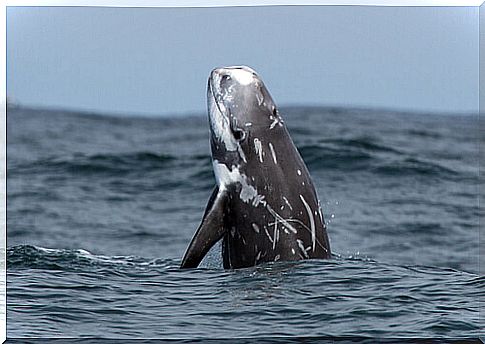
Zífio de Cuiver
The beaked whales are some of the most unknown cetaceans in the world, and the Cuiver’s beaked whale ( Ziphius cavirostris ) is no exception. This dark cetacean of about seven meters lives in small groups and in deep water.
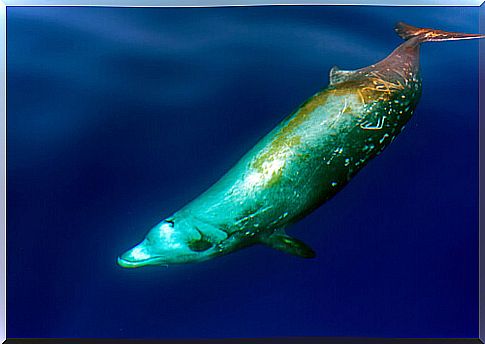
That is why they are little known, despite their striking appearance: their prominent snout and protruding pair of teeth on the lower jaw make them look like a somewhat grotesque dolphin.
In addition, these fangs are usually the protagonists of fights and are responsible for the zífios presenting quite striking scars, similar to the pilot whale. This can be observed when these animals appear dead on the coast.
Threats and curiosities of the cetaceans of the Mediterranean
Although they are not considered residents of the Mediterranean, orcas do have a certain presence in these seas. This is because they are regular residents in the Strait of Gibraltar, where they have perfected bluefin tuna hunting techniques.
All species of cetaceans in the Mediterranean are threatened to a greater or lesser degree. The main reasons are overfishing, seismic surveys and noise pollution, oil exploitation, climate change and plastics.
That is why it is vitally important to protect whales by establishing sanctuaries such as the one in the Balearic Islands, and prevent them from being hunted so that whales and other cetaceans continue to populate the Mediterranean.


